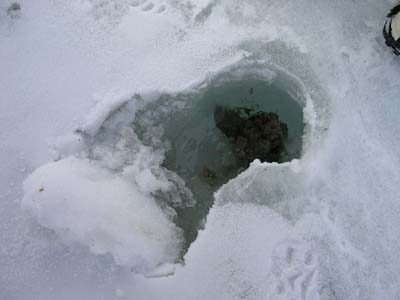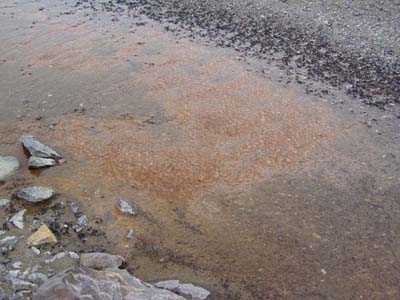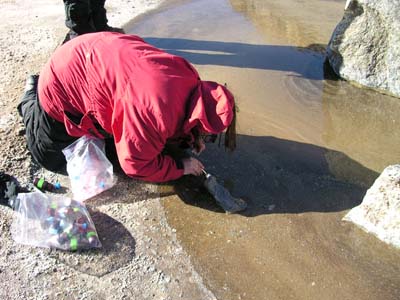
A mat of algae centimeters, some 10 centimeters thick,
grows inside a cryoconite hole on top of Canada Glacier.
Cryoconite holes are filled with liquid water and capped
by a cover of ice. They can be over a foot deep. |
|
Now, 100 years later, we know
that the valleys are not dead. They do in fact contain some
moss and lichen. Algae can be found pretty much wherever there
is a source of liquid water - in the streams, in the lakes,
in places where snow drifts have melted, and on top of glaciers
in cryoconite holes.
The soils contain nematodes,
which are very primitive animals that look like unsegmented
worms. You can even find entire microbial ecosystems growing
inside of translucent rocks that allow some light penetration.
The rocks protect the organisms
from winds and from Antarctica's intense ultraviolet radiation.
However, the largest animal to live year round in the Dry
Valleys is a six-legged wingless fly known as a Collombola
or springtail. Its size - one to two millimeters in length!
-Karen
|




